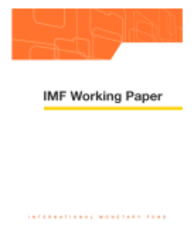
Barriers to Capital Accumulation and the Incidence of Child Labor
The World Bank documents an inverse relationship between GDP per capita and child labor participation rates. We construct a life-cycle model with human and physical capital in which parents make a time allocation choice for their child. The model considers two features that have shown potential in explaining differences in states of development across nations. These are a minimum consumption requirement, and barriers to physical capital accumulation. We find the introduction of capital barriers alone is not enough to replicate the aforementioned observation by the World Bank. However, we find the interplay of a minimum consumption requirement and barriers to capital may enhance our understanding of child labor and the poverty of nations. Additionally, we find support for policies aimed at reducing capital barriers as a means to reduce child labor.
Publication date: November 2005
ISBN: 9781451862393
$15.00
Add to Cart by clicking price of the language and format you'd like to purchase
Available Languages and Formats
| English |
Prices in red indicate formats that are not yet available but are forthcoming.
Topics covered in this book
This title contains information about the following subjects.
Click on a subject if you would like to see other titles with the same subjects.
Political Process- General , Poverty and Homelessness , Barriers to Capital Accumulation , Child Labor , child labour , child workers , Macroeconomic Analyses of Economic Development , Time Allocation , Work Behavior , Employment Determination And Creation
Also of interest
Summary
Copyright © 2010 - 2025
Powered by:
AIDC



